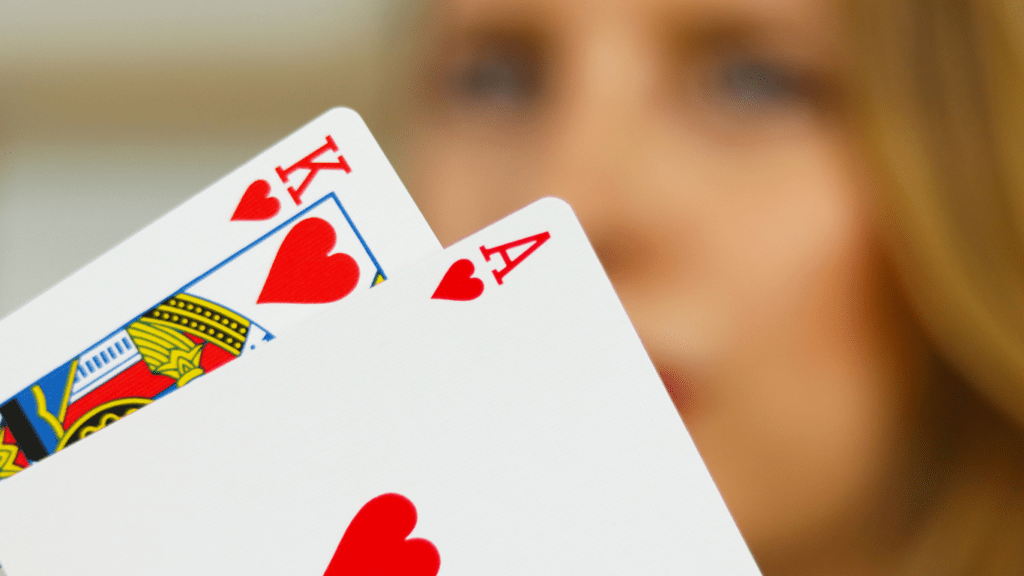Understanding Blackjack Variations
Blackjack variations offer unique rules and odds, impacting the game’s strategic approach. In Spanish 21, players face deck alterations with the removal of all 10s, leading to different odds. To compensate, the variation provides favorable rules like late surrender and double down on any number of cards.
Pontoon, resembling classic blackjack, features unique terms such as “Twist” for hitting and “Stick” for standing. With tighter dealer restrictions, the house edge might appear lower; however, adapting strategy is essential.
Single Deck Blackjack uses one 52-card deck, altering the card-counting efficiency and betting strategies. Although player odds slightly increase in this variation, frequent shuffling reduces tracking accuracy. U
nderstanding the nuances of these variations aids in refining one’s strategic choices, aligning them with each version’s distinct characteristics.
Classic Blackjack Rules Overview
Classic Blackjack, often termed “21,” is the most recognizable form of the game. The rules form a foundation that players can build upon when adjusting strategies for variations.
Basic Objective
In Classic Blackjack, the aim is straightforward: beat the dealer’s hand without exceeding 21. Players receive two cards initially, either hitting for additional cards or standing to retain their current total. A hand equaling 21 on the first two cards, called Blackjack, is the optimal result. The dealer follows strict protocols, hitting until reaching at least 17.
Common Terms
Understanding key terms enhances gameplay:
- Hit: Request another card to improve hand total.
- Stand: Maintain current hand without changes.
- Double Down: Double the initial bet for one additional card.
- Split: Divide a pair into two separate hands, matching the original bet on both.
- Blackjack: A natural 21, consisting of an Ace and a 10-value card.
- Bust: Exceeding 21, resulting in an automatic loss.
- Push: A tie with the dealer, returning the player’s bet.
These rules and terms serve as the backbone for understanding and adapting strategies in diverse Blackjack variations.
Popular Blackjack Variations

Exploring popular blackjack variations reveals distinct rules and strategies that can enhance the gaming experience. Understanding these variations helps refine one’s gameplay.
European Blackjack
In European Blackjack, only one of the dealer’s cards is visible until players complete their hands. The absence of a hole card affects strategy since it limits information on potential dealer blackjacks. This variation often restricts doubling down to hands totaling 9, 10, or 11, requiring players to adjust their betting strategies. For example, strategically doubling down on strong hands can minimize the house edge, though it’s vital to consider the dealer’s visible card.
Spanish 21
Spanish 21 removes all 10s from the deck, altering the probability landscape. However, players benefit from rules favoring their stance, such as optional late surrender and generous payout rules for specific hands. I find that optimal strategies often involve being more aggressive with double downs and surrenders due to the absence of 10s, which changes the likelihood of achieving 21. Understanding this balance is key to mastering Spanish 21.
Pontoon
Pontoon, similar to Classic Blackjack, incorporates unique terminology like “twist” instead of “hit” and “stick” instead of “stand.” Dealer restrictions like drawing on soft 17 can influence player strategy. The five-card trick, achieving 21 with five cards, offers an additional win condition not seen in other variations. Strategic adjustments involve leveraging tighter dealer restrictions and specific winning conditions to reduce the house edge, taking full advantage of the game’s unique rules.
Adjusting Your Strategy for European Blackjack
In European Blackjack, unique rule sets impact strategy and decision-making. Differences influence considerations for betting and hand management.
Rule Differences
European Blackjack uses two decks and lacks a dealer hole card until players finish their hands. Without early knowledge of a dealer blackjack, players face increased strategic uncertainty. Doubling down is more restricted to hand totals of 9, 10, or 11 only, limiting flexibility compared to other blackjack types. This structure influences the decision-making process during gameplay.
Effective Strategies
- Given these rules, conservative betting becomes crucial.
- I focus on minimizing losses from dealer blackjacks by adopting a cautious approach.
- Doubling down when the hand total exactly suits 9, 10, or 11 maximizes potential returns while adhering to the game’s stipulations.
- I prioritize careful observation of the dealer’s card for more informed play.
- Dicey hands might benefit from a stand, preserving capital and reducing volatility in the absence of a dealer hole card.
Strategic Tips for Spanish 21
Spanish 21 offers unique rules that create both opportunities and challenges. By understanding these distinct features, I can refine my strategic approach for optimal gameplay.
Unique Rules
Spanish 21 removes all 10s from the decks, which slightly affects the odds. However, I enjoy perks such as the chance to double down on any number of cards, enhancing my options in various situations. Late surrender allows me to forfeit a hand and recover half my bet if I sense a disadvantageous outcome. Bonus payouts for 21 can also increase my earnings under specific conditions.
Optimal Play Adjustments
Given the 10s removal, I adjust my betting strategy to account for altered probabilities. I must remain vigilant against busting, leveraging features like double down and late surrender. When doubling down, I consider the flexibility of doing so on multiple cards, aiming to capitalize on strong potential hands. I choose surrender wisely if the dealer’s upcard suggests a likely advantage. Understanding these play adjustments ensures my strategy aligns with Spanish 21’s distinct dynamics.
Mastering Pontoon Strategy
In Pontoon, understanding specific differences and adopting tailored strategies can enhance your gameplay. I’ll outline crucial elements that impact strategy.
Key Differences
Pontoon, similar to its classic counterpart, has unique rules that affect strategy. Both dealer and player aim for the best hand, yet Pontoon uses different terms. A “Pontoon” equals a “Natural Blackjack,” comprising an Ace and a 10-value card, while a “5 Card Trick” beats a regular 21 if made with five cards. The dealer stands on a “hard” or “soft” 17, impacting their play. Players can double on two or more cards, splitting hands up to three times, and are required to hit until the total is 15 or higher.
Winning Approaches
To master Pontoon, focus heavily on flexibility and card assessment. Always aim for a Pontoon or 5 Card Trick, considering the advantage of these hands. Doubling down offers strategic benefit due to its flexibility, advising increased usage when holding cards valued between 9 and 11. Beware of the “hit to 15” rule, balancing aggressive and cautious hitting. Keep strategic adjustments at the forefront by capitalizing on multiple splits, which increase chances of high-value outcomes. Monitoring the dealer’s hand is crucial: their hand continues even with multiple cards. Always consider opportunities to optimize these strategic elements to your benefit.



 Community Engagement Manager
Raymundo Stricklandics serves as the Community Engagement Manager for Dice Gamblers Deal, where he is dedicated to creating meaningful connections with the platform’s audience. His role focuses on fostering an active, engaged community of players by interacting with readers, answering their questions, and ensuring their experience with the site is both enjoyable and informative. Raymundo is deeply passionate about building relationships with fellow gambling enthusiasts, whether through social media, email communications, or direct interaction on the site’s forums. He works tirelessly to ensure that the platform not only provides valuable information but also offers a supportive space where players can share their experiences, tips, and success stories. Raymundo also plays a key role in customer support, addressing user inquiries and providing personalized advice to help players navigate the world of table games and betting strategies.
Community Engagement Manager
Raymundo Stricklandics serves as the Community Engagement Manager for Dice Gamblers Deal, where he is dedicated to creating meaningful connections with the platform’s audience. His role focuses on fostering an active, engaged community of players by interacting with readers, answering their questions, and ensuring their experience with the site is both enjoyable and informative. Raymundo is deeply passionate about building relationships with fellow gambling enthusiasts, whether through social media, email communications, or direct interaction on the site’s forums. He works tirelessly to ensure that the platform not only provides valuable information but also offers a supportive space where players can share their experiences, tips, and success stories. Raymundo also plays a key role in customer support, addressing user inquiries and providing personalized advice to help players navigate the world of table games and betting strategies.